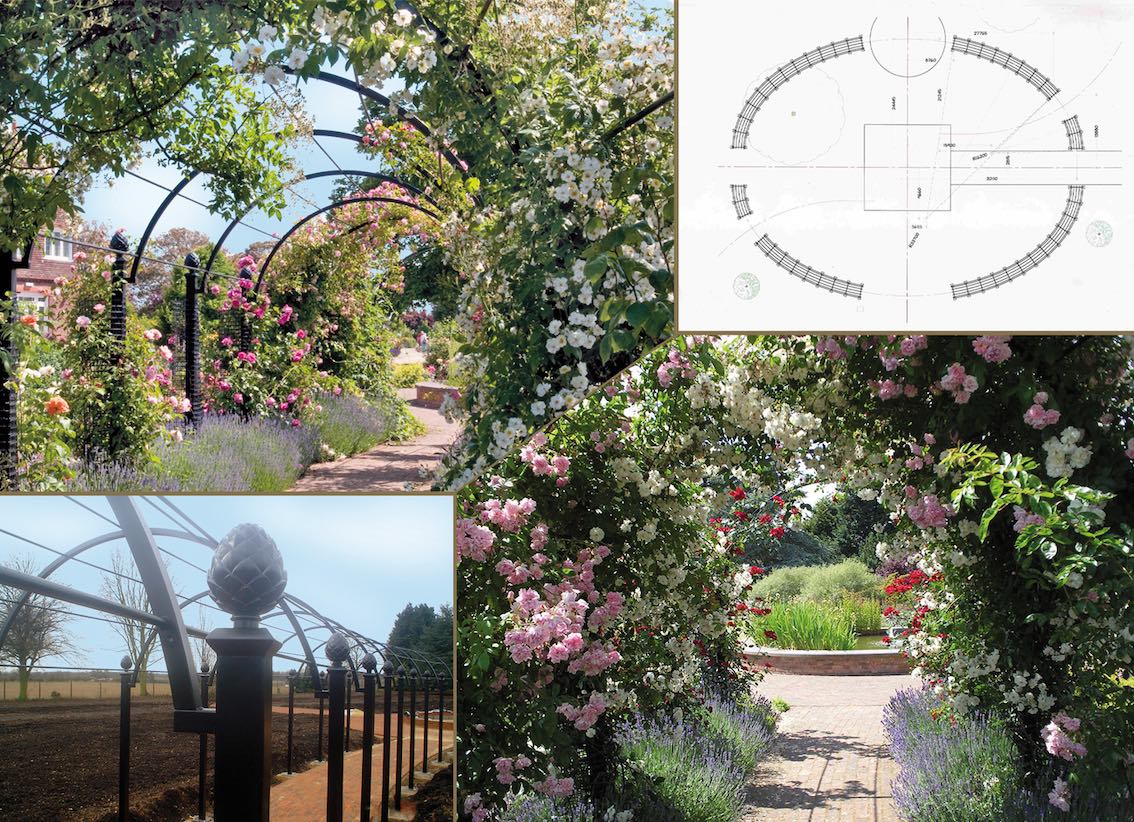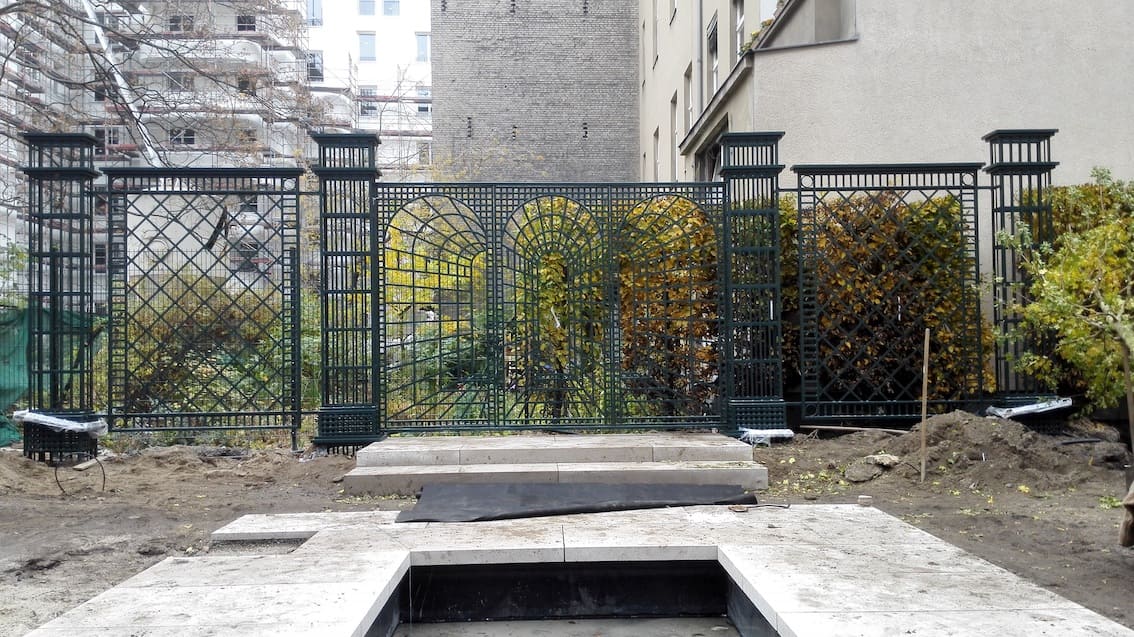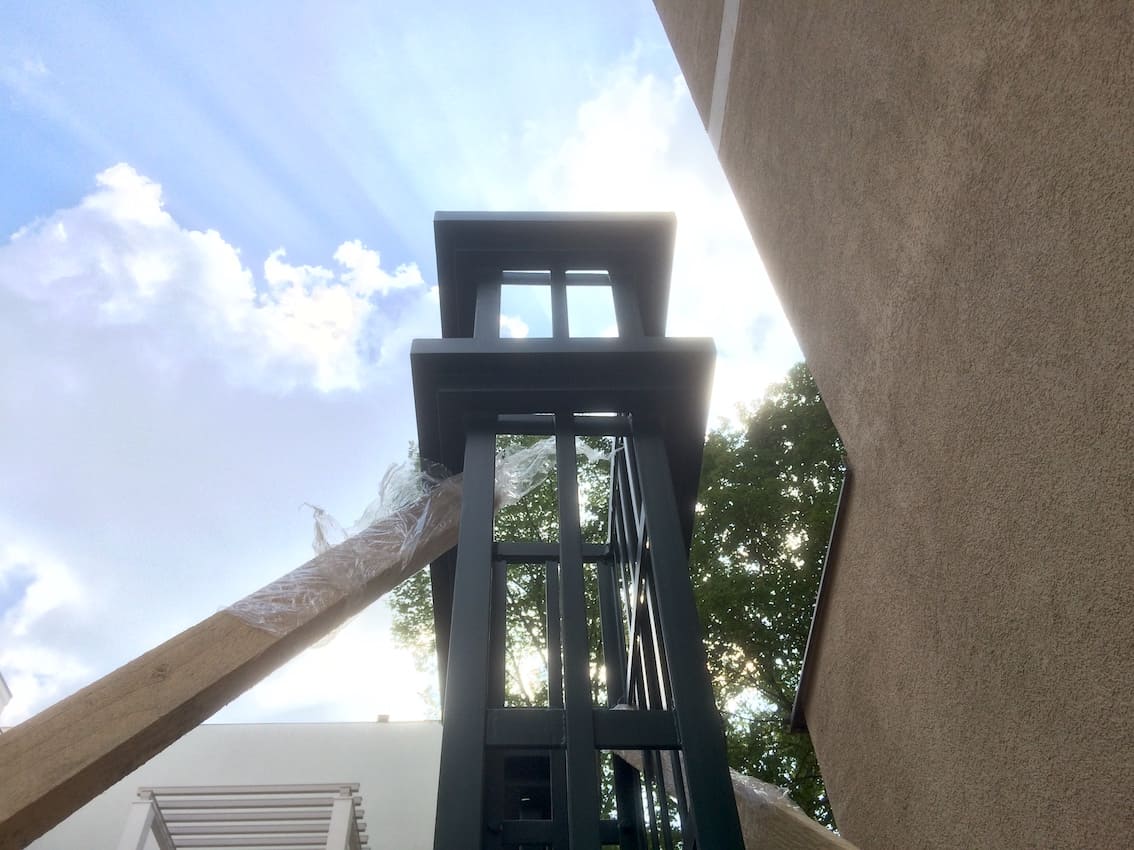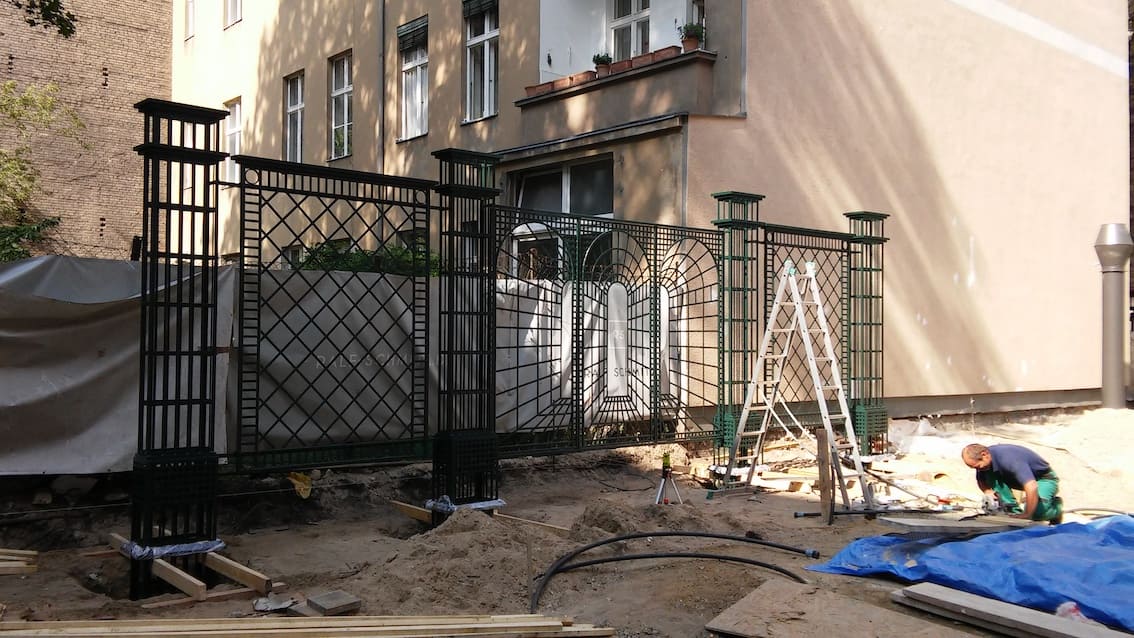How Is a Garden Arch Assembled?
When our metal garden archways, gazebos and arbours leave our workshop to be delivered to you, they are as complete as possible. This is to ensure that our customers have to carry out minimal assembly and installation work when they receive their product. For us, it is also a mark of high-quality production. For most of our structures, all you’ll need to buy are screws to attach it to the ground or the wall. For this, we recommend using only stainless-steel screws. The assembly and installation of our smaller products, plant supports and garden obelisks can be easily carried out by any gardener. No specialist knowledge is necessary. Larger products, such as our garden arches, pergolas, arbours and garden trellises, can be assembled and installed by yourself or with professional assistance from a hard landscaper or other garden specialist.
Classic Garden Elements Assembly and Installation Service
For larger projects, we also offer our own assembly and installation service. Our experienced assembly and installation team consists of the same specialists that make the products themselves. They have decades of experience in installing our garden structures. Classic Garden Elements puts a lot of time, specialist knowledge and care into every phase of the designing, manufacturing and installation process. This allows us to offer you not only a truly unique product, but also the best possible customer service.






